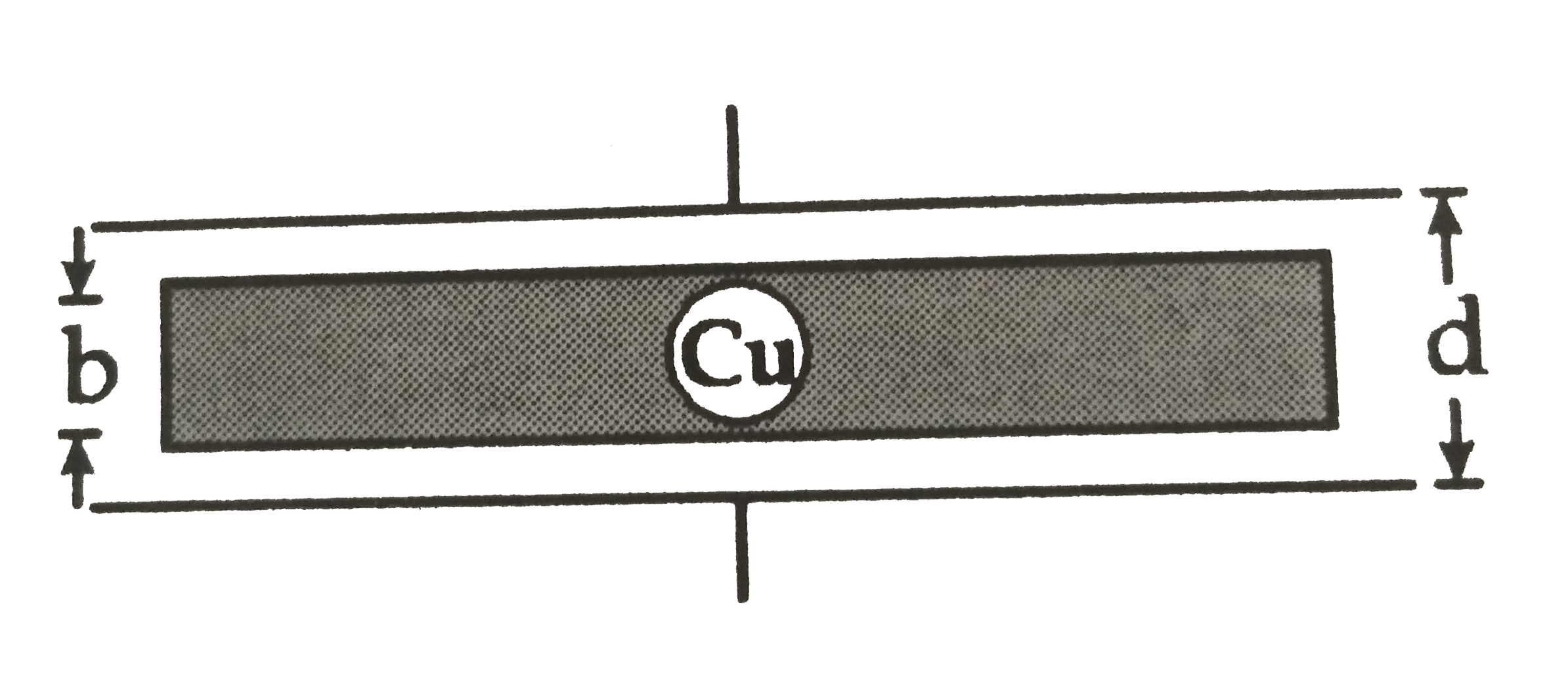A dielectric slab of thickness is inserted in a parallel plate capacitor whose negative plate is at and positive plate is at . The slab is equidistant from the plates. The capacitor is given some charge. As one goes from to .
The magnitude of the electric field remains the same
the direction of the electric field remains the same
The electrical potential increases continuously
The electric potentical increases at first, then decreases and again increases
The correct Answer is:B, C
Step by step video, text & image solution for A dielectric slab of thickness d is inserted in a parallel plate capacitor whose negative plate is at x=0 and positive plate is at x = 3d. The slab is equidistant from the plates. The capacitor is given some charge. As one goes from 0 to 3d(1998). by Physics experts to help you in doubts & scoring excellent marks in Class 12 exams.
Updated on:21/07/2023Topper's Solved these Questions
- CAPACITANCEBook:RESNICK AND HALLIDAYChapter:CAPACITANCEExercise:PRACTICE QUESTIONS (LINKED COMPREHENSION)
Explore 8 Videos
- CAPACITANCEBook:RESNICK AND HALLIDAYChapter:CAPACITANCEExercise:PRACTICE QUESTION MATRIX MATCH
Explore 8 Videos
- CAPACITANCEBook:RESNICK AND HALLIDAYChapter:CAPACITANCEExercise:PRACTICE QUESTIONS (SINGLE CORRECT CHOICE TYPE)
Explore 23 Videos
- ALL ABOUT ATOMS Book:RESNICK AND HALLIDAYChapter:ALL ABOUT ATOMS Exercise:CHECKPOINT
Explore 1 Video
- CENTER OF MASS Book:RESNICK AND HALLIDAYChapter:CENTER OF MASS Exercise:Practice Questions (Integer )
Explore 4 Videos
Similar Questions
A dielectric slab of thickness 't' is kept between the plates of a parallel plate capacitor separated by a distance 'd' (t<d) . Derive the expression for the capacity of the capacitor .
View SolutionA conducting slab of thickness ‘t’ is introduced between the plates of a parallel plate capacitor, separated by a distance d (t<d). Derive an expression for the capacitance of the capacitor. What will be its capacitance when t = d ?
View Solution
Knowledge Check
A dielectric slab of thickness d is inserted in a parallel plate capacitor whose negative plate is at x=0 and positive plate is at x=3d. The slab is equidistant from the plates. The capacitor is given some charge. As one goes from 0 to 3d:
Athe magnitude of the electric field remains the sameBthe direction of the electric field remains the sameCthe electric potential increases continuouslyDthe electric potential increases at first, then decreases and again increasesA dielectric slab is placed between the plates of a parallel plate capacitor. Its capacitance
Abecomes zeroBremains the sameCdecreasesDincreasesA positive charge q is given to each plate of a parallel plate air capacitor having plate area A and plate separation d, then
Asince both the plates are identially charged, therefore, capacitance become equal to zeroBenergy stored in the space between the capacitor plates is equal to q2ε0A2Cno charge appears on inner surface of the platesDpotential difference between the plates is equal to 2qdε0A
A parallel plate capacitor having plate area A and separation between the plates d is charged to potential V.The energy stored in capacitor is ....???
View SolutionA conducting slab of thickness 't' is introduced without touching between the plates of a parallel plate capacitor , separated by a distance 'd' (t<d) . Derive an expression for the capacitance of the capacitor .
View SolutionA slab of copper of thickness b is inserted in between the plates of a parallel plate capacitor as shown in figure. The separation of the plates is d. If b=d/2, then the ratio of capacities of the capacitor after and before inserting the slab will be

View SolutionA parallel plate capacitor is charged by a battery. The battery is removed and a thick glass slab is inserted between the plates. Now,
View SolutionA slab of copper of thickness b is inserted in between the plates of parallel plate capacitor as shown in figure. The separation of the plate is d. If b=d/2, then the ratio of capacities of the capacitor after and before inserting that slab will be

View Solution